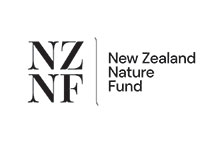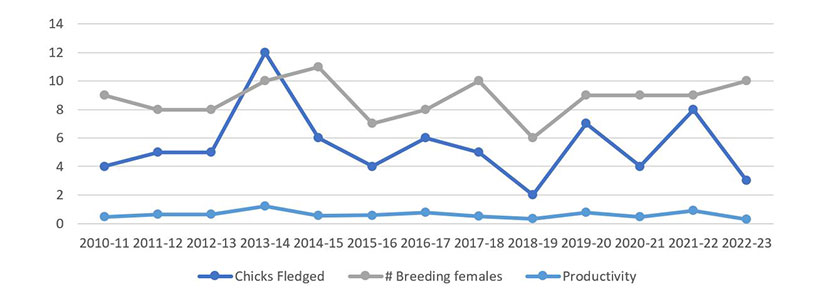
New Zealand status: Native
Conservation status: Threatened–Nationally Critical
Found in: Northland and Auckland
Threats: Habitat loss, predation, disturbance
Species information: Fairy tern on NZ Birds online
We need your help
The tara iti/New Zealand fairy tern is in in trouble – there are fewer than 40 individual birds remaining. Donate to help save this species.
DOC and the New Zealand Nature Fund are working together to protect this species.
Tara iti conservation
The tara iti is probably our most endangered indigenous breeding bird. As at July 2025 there are fewer than 40 adult tara iti remaining and only 10 known breeding female tara iti remaining.
The tara iti is the smallest tern breeding in New Zealand, and the oldest known tara iti was 20 years old.
It is ranked as an endangered species, and carries a 'Category A' priority for conservation action. A DOC Recovery Plan is currently in action.
Records from the 19th century suggest that tara iti used to be widespread around the coast of the North Island and eastern South Island, but were not abundant in any one area.
Tara iti are now confined to the lower half of the Northland Peninsula. Breeding is limited to four regular sites: Waipū, Mangawhai, Pākiri and Papakānui on the South Kaipara Head. Te Ārai and Poutawa rivermouths are also intermittently used.
Threats
The most likely causes of population decline are:
- Habitat depletion – The degradation of sand dune habitat caused by residential development, the planting of pine plantations, and pastoral farming.
- Predation – Introduced predators such as rats, cats, hedgehogs and mustelids preying upon eggs and chicks.
- Environmental events – High tides, floods, and storms destroying and washing away nests.
- Death of embryos – Nesting birds are eaten or chased away by predators, and the embryos die from exposure.
- Recreational activities – Beach activities such as drone use, dog walking, vehicles and horses on the beach, and bonfires disturb the birds and scare them away from their nests.
Protecting vulnerable nests
Nesting in a small scrape in the sand, these delicate sea birds are very vulnerable. Nest sites are roped off and signs erected to alert people to the area.
Department of Conservation staff and volunteers are on site during the breeding season raising awareness with people who use the beach. Fishermen are encouraged to bury fish remains because they can attract unwanted numbers of gulls to the area.
Nests are sandbagged against storms and high tides. Where necessary eggs are cross-fostered into other nests or removed for hand rearing. A programme of trapping predators around nests is vital to help protect the adults, eggs and chicks.
Previous conservation efforts
In 1983 the number of tara iti at Mangawhai and Papakānui Spit dropped to an alarming all-time low of 3–4 breeding pairs. The Department of Conservation (then the New Zealand Wildlife Service) stepped in and initiated protection. A successful population turnaround resulted. This was probably due to the introduction of site rangers and the fencing of nests.
Protection has continued until the present day. The number of pairs rose to 7 in 1993. Since 1997, between 6 and 11 females have bred each season. Breeding data from 2010-2023 is presented below:

Tara iti breeding summary data 2010-2023. Productivity = chicks fledged/breeding females.
Successful management techniques
Thankfully, additional funding in recent years has allowed for much greater protection and monitoring.
DOC employs 8 fulltime site based rangers over the breeding season. They are supported by a wider team of 5 permanent operations staff, technical advisors and the Tara iti Recovery group.
The duties of a site ranger include: monitoring breeding attempts, maintaining fences around nesting sites, nest translocation, predator identification and control (including video surveillance), egg and chick manipulation, public education, and compliance.
Volunteers also play a big part in monitoring tara iti and are a great help to the rangers.
DOC is also supported by Patuharakeke, Ngāti Wai, Ngāti Whātua o Kaipara, Ngāti Manuhiri, Te Uri O Hau and the Pākiri G Trust, Auckland Zoo, Auckland Council, The Shorebirds Trust, The NZ Fairy Tern Charitable Trust, Mangakura Kōkopu Fish Hatchery, Manaaki whitebait, NZ king Salmon, About Tern, Birds NZ, NZ Defence Force, and the Waipū Trapping Group.
Recovery Plan in action
In 2017 a structured decision making process was undertaken to direct the recovery efforts for tara iti. The main aims for the program are:
- Full management of current breeding.
- Over-winter management of tara iti.
- Establishment of new tara iti breeding sites.
- Develop a captive rearing program for maximising tara iti productivity.
You can help
Volunteers can help monitor tara iti by recording activities of the birds and their chicks, any potential threats present, fishing sites and other observations that can help with our protection efforts.
